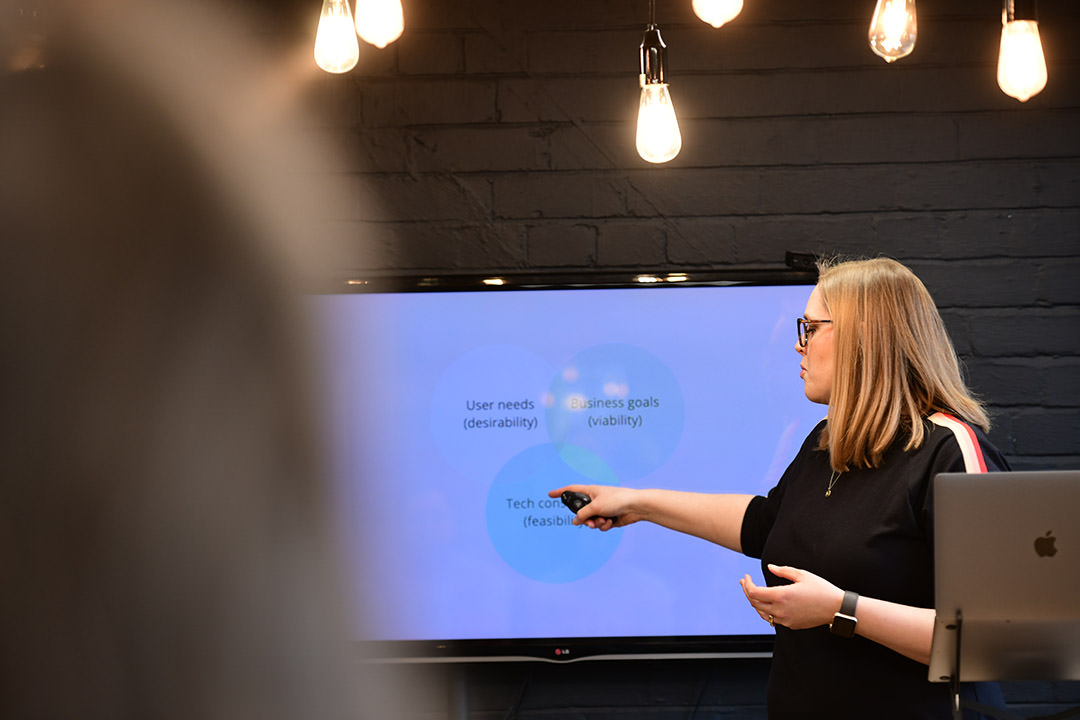Improving remote workshops

We’ll keep iterating so it’s as seamless for remote participants as it is for those in the room
We often have people participating in meetings and workshops remotely. There are limitations we regularly come up against because people aren’t in the same room together. Things like using post-it notes, which means not everyone can see what’s being discussed. We’ve been putting a lot of effort into making remote working better, so we decided to try out having a remote facilitator and only using online tools.
We chose a workshop we held recently about our dxw days, where we wanted to work with staff to get some suggestions on how we could improve them.
Planning, planning, and more planning
We had initially decided to have one facilitator in the room but realised that:
- it’s always more fun with two people and feels more collaborative for the participants
- staff workshops are an ideal way to involve people who haven’t had a chance to facilitate and get them more comfortable with it
- this was a good opportunity to test having a remote facilitator
Israt, who regularly works remotely, got us thinking about some of the challenges of being remote when we were planning this workshop. Amy, who rarely works remotely, joined a workshop as a remote participant ahead of time to understand the challenges.
We also had some help from staff who have conducted remote research and analysis sessions and who were new starters. They gave us some insights and also helped us test and refine the online document sharing that we’d planned to do.
Ditching the post-its
The plan was to have groups of people in the room working together, and another group working remotely. We decided on an individual warm up exercise in Miro, an online whiteboard that lets people collaborate in real time. Followed by a group activity using online documents. This gave people a chance to think on their own before getting into group work.
We wanted the group to iterate the documents by “passing” them to a different group after they’d worked on their section. We would then use this shared document to discuss everyone’s ideas.
It was a lot of moving parts to consider, but it worked pretty well overall.
Some things we learned
Timings and set up:
- book some time directly before the session to set up and test
- allow a bit of time for tech issues
- have scheduled timings during the workshop, as you would any other workshop, but be prepared to need more or less time and be ready to adapt. The Miro activity was more efficient than expected and gave us more time to work on the other activities
- if you want people to bring their laptops, put it in the calendar invitation and also remind them on the day
- the in-room facilitator needs to be prepared to run the session if the remote person’s internet goes down and vice versa, so it’s best to know each other’s roles
- the remote facilitator can lead the group discussion for remote people, and should give others in the group chance to present back
- it’s helpful for the two facilitators to maintain a back channel throughout so that both sides can “read the room” and know when it’s time to move on to the next activity
Using Miro:
- create the Miro board ahead of time and make sure users will be able to access it without having to give any permissions on the day
- if you link to the board before the workshop starts, be aware people will be in there before you’ve had a chance to introduce the activity
- putting the question on the Miro board was helpful as some people joined a bit late
- if you have a multi part activity in the same Miro board, make sure you’re clear if you want people to do only one activity at a time
- make sure someone is comfortable being responsive in Miro. We had to increase the Miro canvas size due to the enthusiasm of participants!
- the Miro timer is a very helpful tool
Online document passing:
- both the facilitators had speculated about the four areas we’d want to speak about before the workshop so we created the documents in advance
- we also gave participants the chance to agree on the documents and potentially change any based on the Miro activities at the start of the workshop
- the documents and “passing” instructions were shared in Slack. We probably need to be clearer with these types of instructions as we had to check people were in the right document. We gave each group a number and made sure they knew which section to work on
Remote facilitating:
- Israt, as the remote facilitator, made sure the remote team was not confused at any given time during the activity. This was helped by muting the room during the group activity
- she regularly asked if anyone had any questions and briefly repeated what the in-room facilitator had mentioned. We also used a back channel to know when it was time to come back together
- remote participants were encouraged to communicate collectively, and we asked team members to be a spokesperson and present their work to the wider team
Having a remote and an in-room facilitator was a useful experiment. We plan to do more workshops like this and keep iterating the process so that it’s as seamless for the remote participants as it is for those in the room.